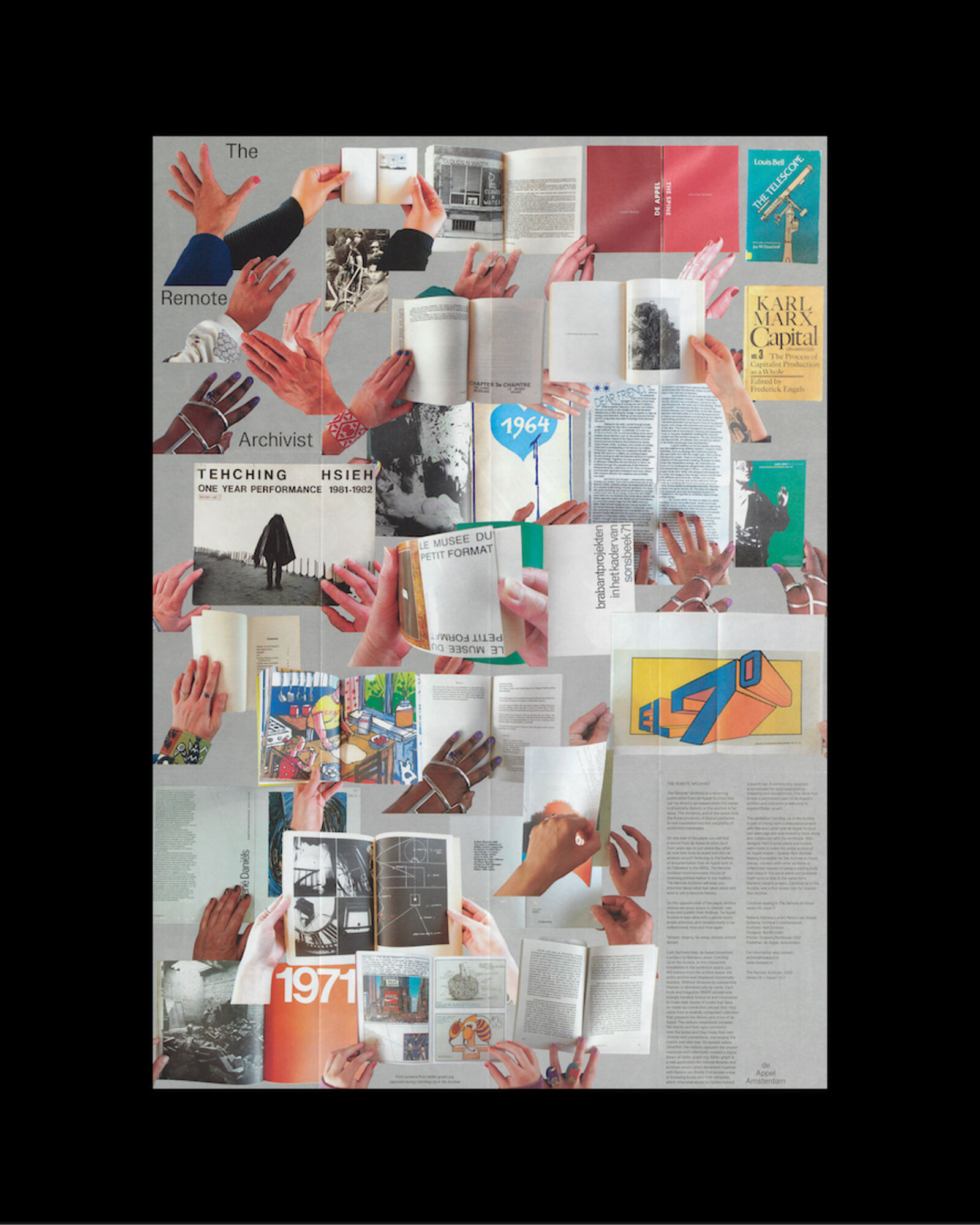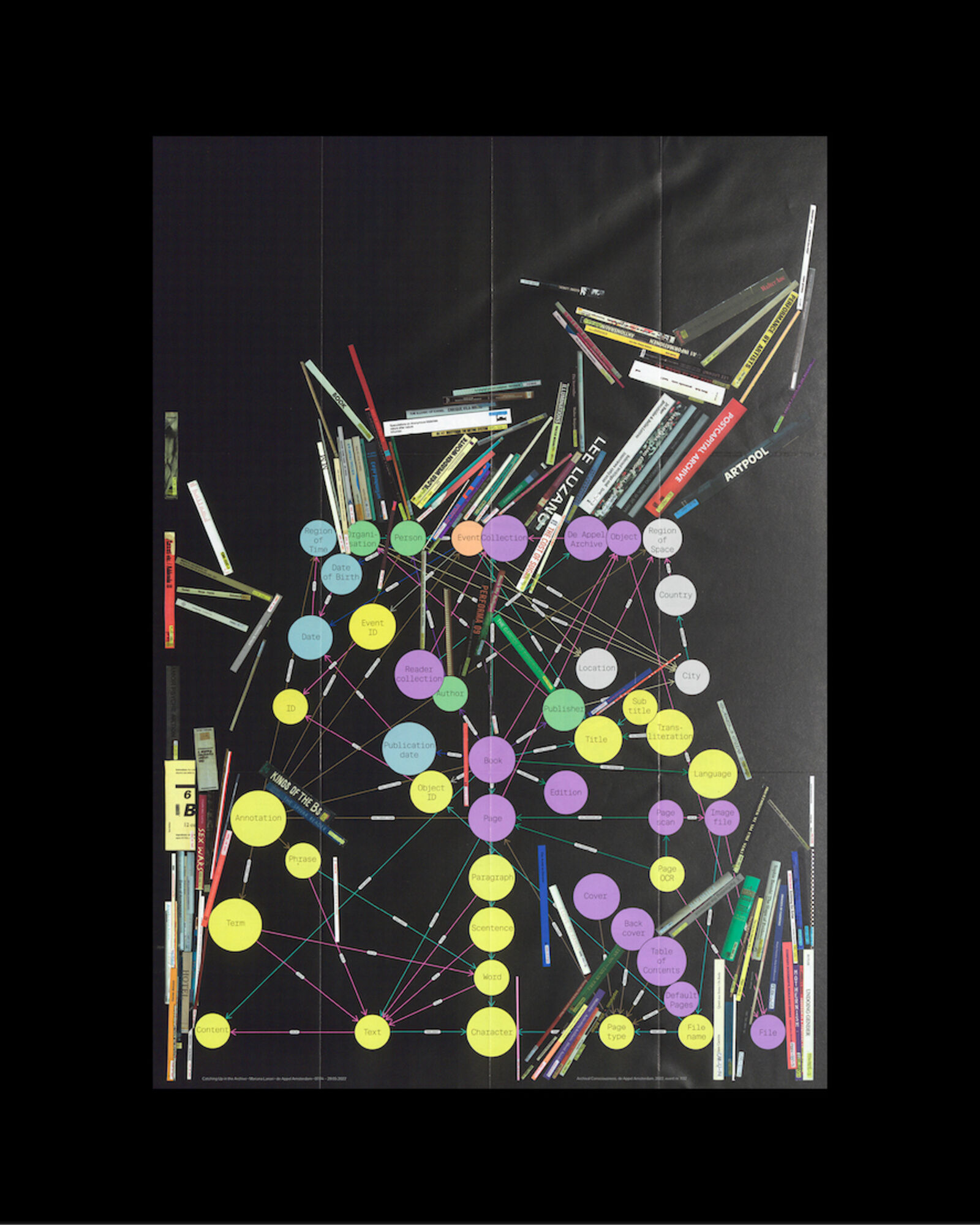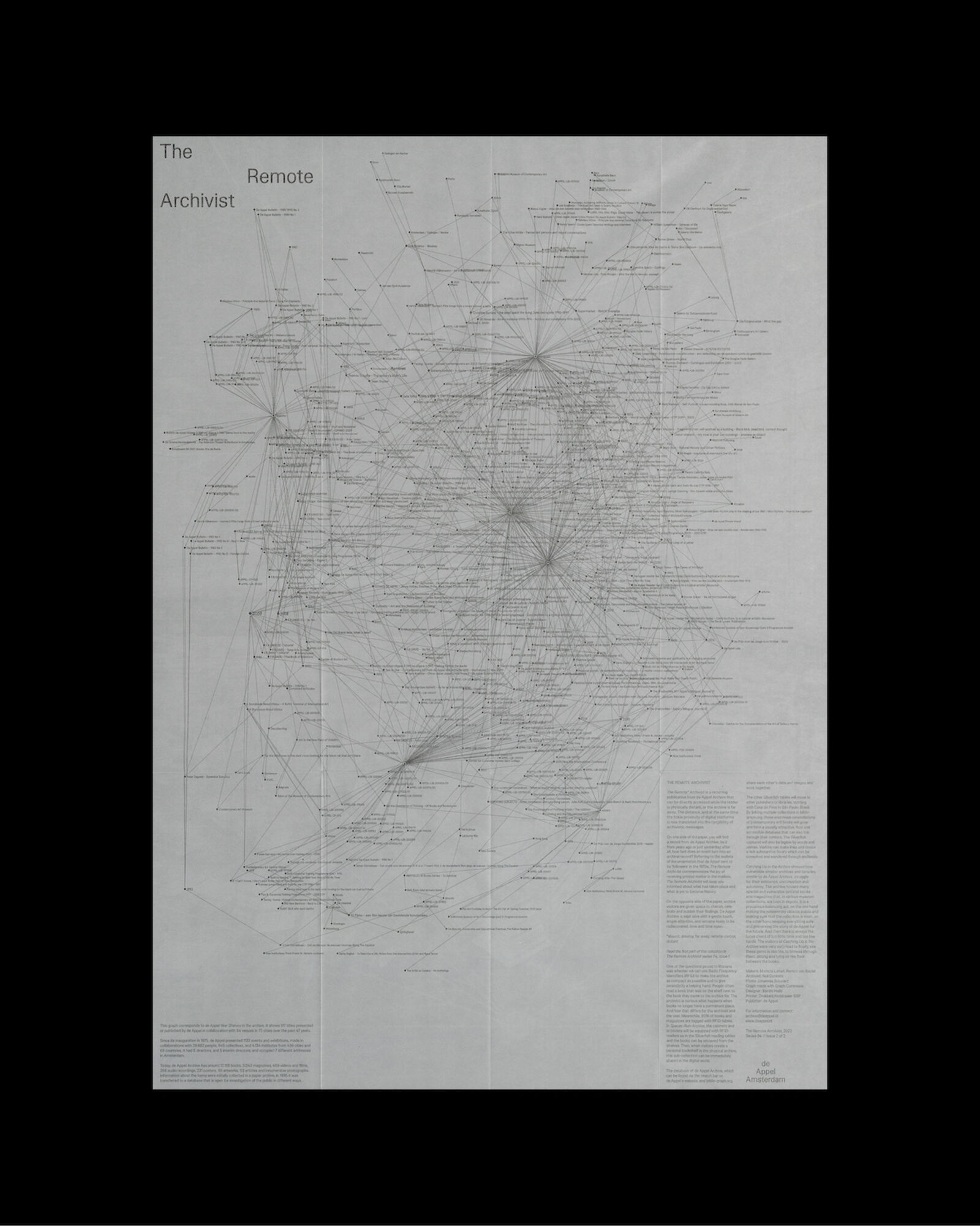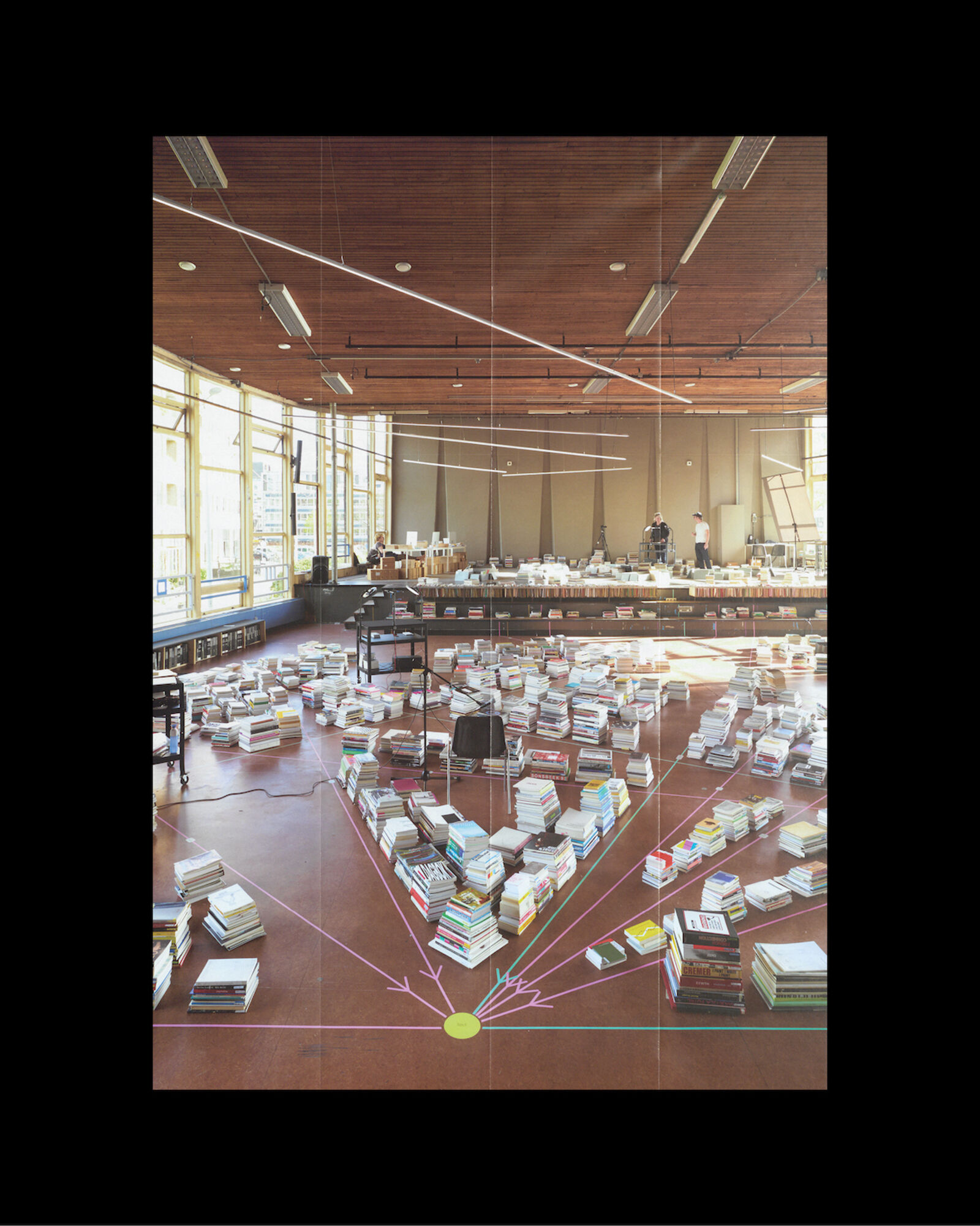Series 04: Mariana Lanari / Catching Up in the Archive
Last April and May, de Appel presented a project by Mariana Lanari: Catching Up in the Archive. In this interactive installation in the exhibition space, just 100 meters from the Archive space, the entire Archive was displayed horizontally stacked, without divisions by substantive themes or alphabetically by name.
Each book and magazine (16000 pieces) was lovingly handled, looked at and considered to make neat stacks of books that have no made-up connection, except that they come from a carefully composed collection that presents the history and story of de Appel. The visitors meandered between the stacks and their eyes wandered over the books and they made their own choices and connections, rearranging the stacks over and over. On special tables, called Silverfish, the visitors captured the chosen materials and collectively created a digital library at biblio-graph.org. Biblio-graph is a web application for cultural libraries and archives which Lanari developed together with Remco van Bladel. It proposes a way of browsing books and their networks, which otherwise would be hidden behind a search bar. A community-sourced environment for data aggregation, mapping and visualization. The Silverfish is now a permanent part of de Appel’s Archive and everyone is welcome to expand Biblio-graph.

TRA series 04. Design: Bardhi Haliti & Zuzana Kostelanská

TRA series 04. Design: Bardhi Haliti & Zuzana Kostelanská

TRA series 04. Design: Bardhi Haliti & Zuzana Kostelanská

TRA series 04. Design: Bardhi Haliti & Zuzana Kostelanská
The exhibition Catching Up in the Archive is part of a long-term collaborative project with Mariana Lanari and de Appel Archive. Two years ago she was invited to think along and collaborate with the archivists. With designer Bert Kramer plans and models were made to make the entire Archive of de Appel mobile – named Spaces-Run-Archive. Making it possible for the Archive to travel places, connect with other archives or collections instead of being a waiting body that stays in the same place and presents itself more or less in the same form. Mariana Lanari's project, Catching Up in the Archive, was a first stress test for Spaces- Run-Archive.
One of the questions posed to Mariana was whether it would be possible to use Radio Frequency Identifiers (RFID) to make the Archive as compact as possible and to give serendipity a helping hand. People often read a book that was on the shelf next to the book they came to the Archive for. The archivist is curious what happens when books no longer have a permanent place. And how that differs for the archivist and the user. Meanwhile, 90% of books and magazines are tagged with RFID-labels. In Spaces-Run-Archive, the cabinets and archivists will be equipped with RFID- readers as in the Silverfish reading tables and the books can be retrieved from the shelves. Then, when visitors create a personal bookshelf in the physical Archive, this sub-collection can be immediately shared in the digital world. The database of de Appel Archive, which can be found via the search bar on de Appel’s website, and biblio-graph.org share each other's data and images and work together. The other Silverfish tables will move to other publishers or libraries, starting
with Casa do Povo in São Paulo, Brasil.
By linking multiple collections in biblio- graph.org, these enormous constellations of (contemporary art) books will grow and form a visually attractive, fluid and accessible database that can also link through their content. The Silverfish captures will also be legible by words and names. Visitors can make links and create a rich substantive library which can be consulted and wandered through endlessly.
Catching Up in the Archive showed how vulnerable smaller archives and libraries, similar to de Appel Archive, struggle for their existence, continuation and autonomy. The Archive houses many special and vulnerable (artists) books and magazines that, in various museum collections, are kept in depots. It is a precarious balancing act, on the one hand making the noteworthy objects public and making sure that the collection is seen, and on the other hand keeping everything safe and preserving the story of de Appel for the future. And then there is always the loose chord of too little time and too few funds. The visitors of Catching Up in the Archive were very surprised to finally see these gems in real life, to browse through them, sitting and lying on the floor between the books.
Makers: Mariana Lanari, Remco van Bladel
Archivist: Nell Donkers
Schema: Archival Consciousness
Photo: Johannes Schwarz
Graph made with Graph Commons
Designer: Bardhi Haliti
Printer: Drukkerij Raddraaier SSP
Publisher: de Appel